The experience of climbing to the top of the world is something every professional mountaineer dreams of and is considered an extraordinary experience, but there are not a few climbers who packed their backpacks with the desire to conquer the highest peak in the world, but died on the way to reach it, and their bodies are found In Everest’s place after so many years, it is a phenomenon.
Isnables: Mount Everest in the Himalayas is the highest mountain in the world and the highest point on the planet. Conquering Everest has always been an attractive yet challenging challenge for professional mountaineers, and the experience of seeing the world from its highest point is not without danger.
To date, many explorers for the conquest of Everest have managed to reach the summit, but many other climbers are stopped from continuing the journey due to the very difficult conditions of departure and navigation and are forced to stay in the shelters of Everest and return down. However, there are many climbers who packed their backpacks with the desire to conquer this peak, tread the difficult path to conquer it, lost their lives on the way to reach it, and never managed to get off it. This mountain.
Corpses are a familiar sight for climbers to the surface of the world
Since the first ascent to Everest in 1900, 310 deaths have been recorded on Everest, and due to the constant dangers of climbing, this number is increasing year by year.
Most of the dead bodies of the failed climbers can be seen everywhere on the way to Everest because of the bad weather conditions, as well as the difficult access roads and the high costs of bringing them down. They remained intact.
According to available statistics, until 2015, almost 200 corpses were counted along the way to the summit of Everest, which climbers saw on their way.
“I can’t believe what I saw there,” Everest filmmaker Elia Saikali wrote on Instagram after climbing to the summit in 2019. death. massacre. Chaos and rows of corpses can be seen on the way.”
In the spring of the year Elijah climbed Everest, 11 climbers were killed, making it one of the deadliest climbing seasons in recent years. In 2015, a massive avalanche took the lives of at least 19 climbers.
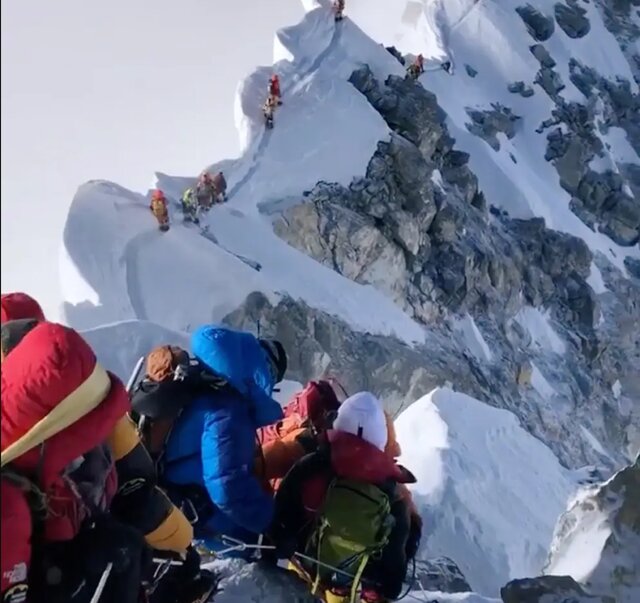
2023 wasn’t a year without death surprises for climbers. Since the start of the peak climbing season, 4 climbers have lost their lives on their way to climbing and conquering Mount Everest. This year is expected to be one of the busiest in terms of the number of Everest climbers. So far, the Nepalese government has issued climbing permits to 463 applicants to conquer Everest, including Sherpas and other expedition team members, such as support and logistics teams. Nearly 900 people will go to the summit of the world’s highest mountain this year.
Sherpas are a group of people from the Himalayan region such as Nepal and Tibet, who accompany teams and applicants to conquer Everest because of their knowledge of the region and also have mountaineering skills.
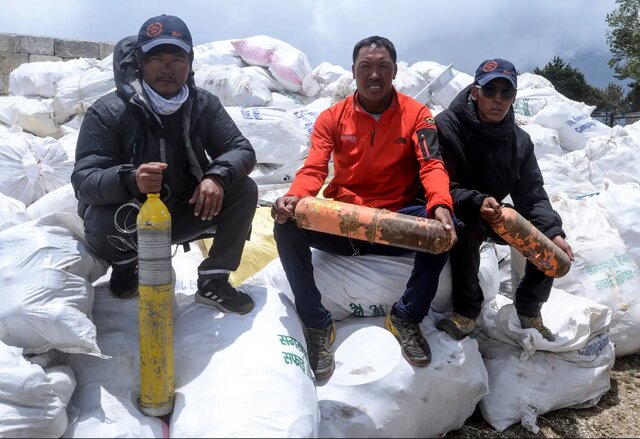
A souvenir photo of Nepali Sherpas after collecting rubbish from Mount Everest – 2019 / AFP Photo
Everest summit was not without casualties this year. At the beginning of the climbing season, 4 climbers died.
One reason for the rarity of recovery and removal of these remains is the high cost of doing so. The mountaineering team usually climbs very difficult routes to lower a body from the top of the summit From 40 to 80 thousand dollars It costs money, and few people are willing or able to pay that cost to take down the body, even if it belonged to their loved ones and relatives.
Aside from the financial costs, trying to extract bodies from the peak also costs lives. Before that, two Nepalese climbers died in 1984 while trying to find a body in the heights of Everest, and their bodies remained on Everest like other deceased people on the way to the summit. This is why most of those who die on the way up are not shot down and stay on the way.
Everest is full of tourists
Some mountaineers believe that the reason for the increase in the number of deaths among those trying to climb Everest in recent years is the overcrowding of climbers and the overcrowding of climbing routes. They say that many Everest aspirants are so eager to reach the summit and share the summit’s testimony that they risk their lives and the lives of their teammates to make it happen, heeding the warnings of other professional and experienced team members. Even in cases where they are warned of imminent death.
They believe that by denying entry to inexperienced applicants and reducing the issuance of climbing permits, the number of deaths can be reduced to a certain extent.
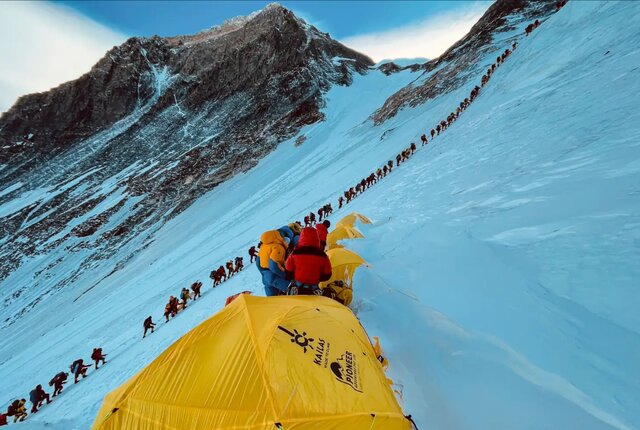
Some other climbers, regardless of the congestion and congestion of the Everest region, from the dangerous human traffic in the so-called “death zone” The mountain whose height is high Eight thousand meters Seems they have a complaint. In the death zone, the air is dangerously thin, and most climbers use oxygen masks to survive.
Even if a mask is used, the death zone on Everest is not a place for everyone, and climbers must have special training to survive in this zone and be patient to endure these dangerous conditions. Some new climbers who have not received the necessary training and do not have the special physical ability to withstand these conditions – even with the use of a mask – begin to hallucinate, undress in freezing conditions and talk to imaginary companions. These actions endanger the lives of the new climbers and the lives of the team members.
the body of the man in the green boots; Sad guide for mountaineers
One of the most famous bodies left in the way, which climbers have been talking about for years, belonged to a man who became known as Green Boots because of the green color of his boots. It belongs to a young climber named Tsewang Paljor, who died 27 years ago in 1996, near the summit of Everest, in a cave on the northern route to conquer Everest, and his body remained intact.
Paljur is a member of a six-member team to climb Everest and near the summit, a violent storm occurs and three of the group stay where they are, and the other three team members decide to reach the summit at any cost. Paljor decides to stay but dies due to the severe cold.
In these 27 years, Paljor’s body has become a sad guide for other Everest climbers, and climbers either rest next to Paljor’s body or use the location of this body to announce their location to other climbers and say “Now we are next to the green shoes!”
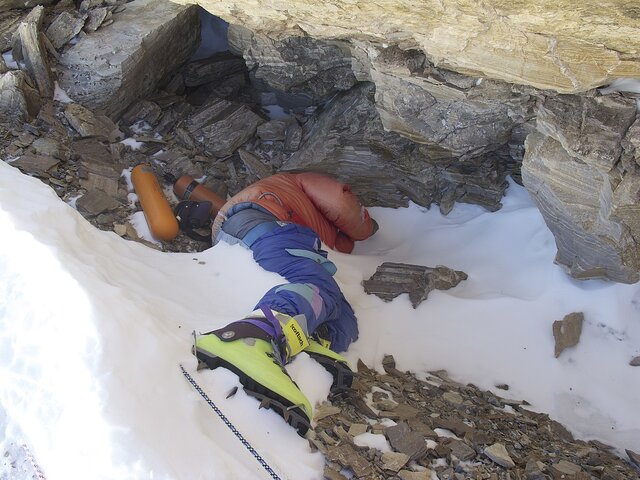
The mountaineer known as the “Green Boots” who died 27 years ago
Paljor’s body was under a rock and apparently alive, lying on his left side. He pulled the hood of his jacket over his head tightly with his hands clasped across his chest in a way that seemed to want to protect himself from the bitter cold before he died.
At first, Green Boots’ body was right in the path, but in 2014, a Chinese mountaineer moved his body slightly so that the path was a little more open to other climbers, and people wouldn’t have to kick Green Boots’ body to cross that path.
The place where Green Boot’s body lies is near the top, and other climbers usually walk with caution and respect when passing his body, in some way respecting their deceased comrade.
Noel Hanna, a veteran climber who has climbed Everest seven times, says in this regard: “I would say that all climbers, especially those who climb Everest from the northern route, know or have read about the Green Boot, and of the rest have heard of it.” .
Hannah goes on to say that “about 80 percent of climbers who climb the northern route take a break at the refuge where the Green Boots rest, and it’s almost impossible not to miss them.”
Regarding the deceased climber known as Green Boots, we know he was 28 years old at the time of the climb and is said to have been a member of the Indo-Tibetan Border Police.
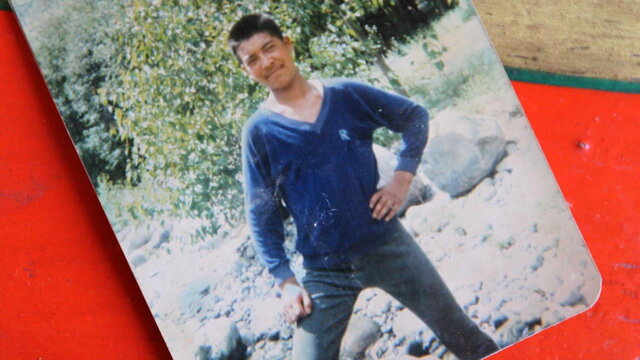
Photo by Tsewang Paljor
Balgour’s brother, Tinley, a monk, had met him in Delhi, India a few days before he left and said his farewells. Regarding Gol’s health, he said he had “just passed his health test and was very excited to go to Tibet and conquer the Himalayas”.
The Balgor family announced that after their son’s death, the insurance paid them only $3,690 and that they only receive $36 in the monthly pension. “This amount, which is paid to us as a monthly stipend, does not even cover our expenses for three days,” says Paljor’s mother.

A medal given to the Paljur family posthumously
Although Paljor dies on Everest and his family receives a small fee for the loss of their son, and his body becomes a mournful sight for climbers, Everest sustains life when he takes it. In the end, Paljor became a stop for the Green Boots. An unnamed mountaineer that Everest climbers pass through every year on their way to the glory of conquering Everest.
the end of the letter










